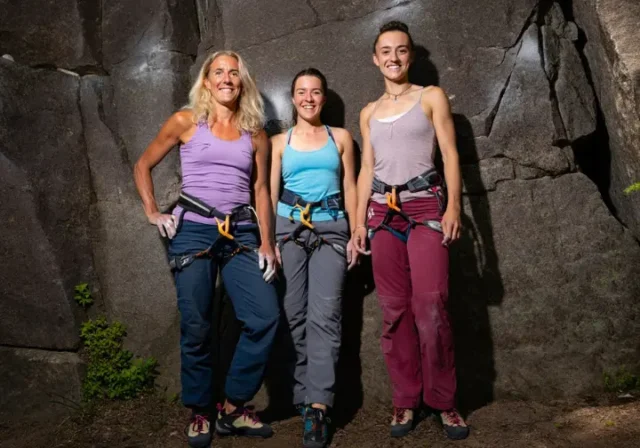In this article
The search for truly functional Ladies Climbing Pants often feels like its own climb, as standard sizing rarely caters to the unique needs of female climbers. This comprehensive pants guide serves as your expert route map. We’ll help you understand fabric performance, navigate common fit problems, weigh the pros and cons of pants vs. leggings, and showcase top picks designed for comfort and movement. Find the perfect Ladies Climbing Pants to elevate your climbing experience. Let’s begin the approach.
Decoding Climbing Pant Fit
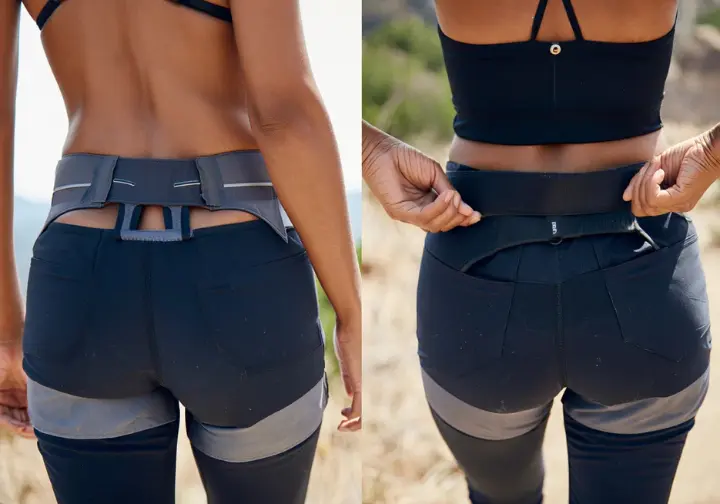
The quest for the perfect climbing pant fit involves more than just waist and inseam numbers. It’s about how the design accommodates a moving body, interacts with a harness, and allows for unrestricted technique. We’ll break down the key elements that separate adequate pairs of pants from truly great women’s rock climbing pants, addressing common frustrations many climbers face.
Body Shape & Common Pitfalls
One of the most frequent battles is the waist gap – that annoying space at the back when pants fit the hips and thighs but not the waist. This is particularly common for those with a more significant hip-to-waist ratio and often leads to constant readjustment under a climbing harness. Finding pants designed to accommodate curves, offering enough room in the seat and thighs without excessive waist fabric, is another common hurdle for rock climbing pants womens styles. Standard athletic cuts can feel restrictive here.
The rise of the pant (low, mid, or high) greatly affects comfort with climbing harnesses. Many climbers prefer a higher rise for better coverage and less pressure, though torso length influences the ideal fit. What rise feels best under your harness? Brands use terms like Standard, Slim, Relaxed, and Jogger to describe fit styles, each offering different silhouettes and fabric management. Exploring niche brands like Pangoo Apparel, specifically created to tackle fit issues like the waist gap, shows that solutions exist when diverse body shapes are prioritized in women’s climbing trousers.
Importance of Correct Inseam
Climbers outside the average height range know the inseam struggle well. Pants are either too short, leaving ankles exposed, or too long, bunching up and obscuring crucial footwork. This isn’t just annoying; it can impact safety and precision when climbing. Have you ever missed a foothold because your pair of pants were in the way?
The best solution is seeking out brands that offer multiple inseam options – Short, Regular, and Tall – like those found in models such as the Outdoor Research Ferrosi pants or Prana Halle. This provides a far more tailored fit than generic sizing for these specific pants. Ankle-length pants, like the Mountain Hardwear Dynama/2 Ankle, or capris offer another excellent workaround, eliminating excess fabric around the feet, particularly helpful in warmer weather or for gym climbing. Furthermore, adjustable cuffs provide a versatile way to manage leg length effectively, allowing customization for different shoes or activities.
Engineered for Climbing Movement
What truly sets climbing pants apart from non-climbing pants or regular pants is how they are engineered for movement. A gusseted crotch, that diamond-shaped panel replacing the standard four-seam junction, is a game-changer. It dramatically increases range of motion for high steps and wide stances, preventing binding and distributing stress for enhanced durability. You won’t find this feature in typical everyday jeans or slacks.
Articulated knees, pre-shaped through darts or paneling to mimic the leg’s natural bend, prevent fabric from bunching behind the knees. This complements the gusset, reducing restriction during dynamic moves. Combined with stretch fabric, these features work synergistically, creating the freedom needed for complex sequences. This thoughtful construction also improves comfort under a harness by eliminating bulky seams at pressure points, a small detail that makes a big difference on long personal climbing days. Understanding these design elements helps you appreciate why specific climbing clothing is worth considering.
Harness-Friendly Waistband Design
A comfortable climb often starts with a comfortable waistband, especially one that plays well with your harness. The primary goal is a flat, smooth profile under the harness belt to avoid pressure points. Bulky buttons, zippers, thick seams, or traditional belt loops can become sources of significant discomfort. A harness-compatible waistband is non-negotiable for many climbers.
Wide, flat elastic waistbands, seen on pants like the Mountain Hardwear Dynama/2 or Black Diamond Notion SP, are often favored for their low profile, though they offer limited adjustability. Internal or external drawstrings provide that needed adjustability to combat waist gaps, with internal options generally being less bulky. A common mistake is prioritizing minimal bulk over the adjustability needed to actually secure the fit where the waistband stays put. More technical pants feature low-profile integrated belt systems (webbing or hook-and-loop) for precise, secure adjustment without the need for a separate belt, offering a high-performance solution, avoiding a restrictive waistband.
Adjustable Cuff Benefits
Adjustable cuffs might seem like a minor detail, but their benefits are significant. Primarily, they enhance footwork visibility. Cinching the cuffs keeps excess fabric away from your feet, allowing for more precise placement on small or tricky holds – essential for technique-intensive climbs. How many times has baggy fabric obscured your view? Having adjustable ankles makes a difference.
Beyond visibility, adjustable cuffs offer practical length management, acting as a pseudo-inseam adjustment for those between sizes or adapting to different footwear like climbing shoes. They also create a seal around the ankles, blocking trail debris during approaches or descents. Common cuff adjustment types include simple elastic, versatile drawcords (like on the OR Ferrosi), or snap closures. This underrated feature adds adaptability and performance, proving its worth across varied conditions and climbing styles.
Understanding Fabric Performance
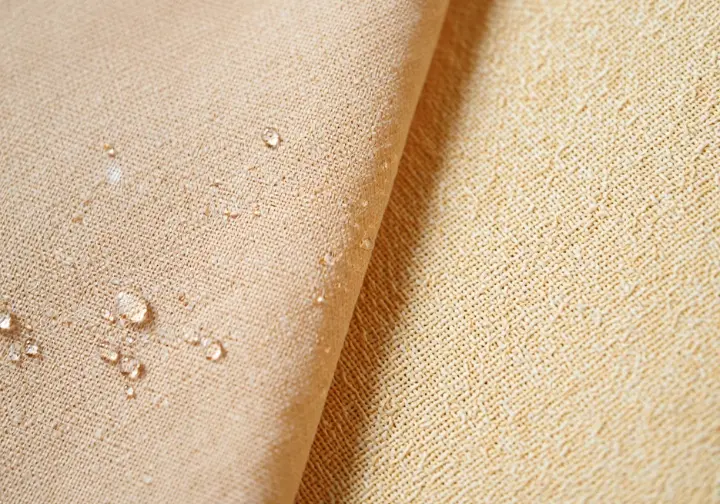
The fabric of your climbing pants is the foundation of their performance, dictating stretch, durability, breathability, and weather resistance. Choosing the right material involves balancing these properties based on your climbing style and typical environment. From rugged synthetics to comfortable naturals and specialized treatments, understanding the material map is key for selecting durable pants.
Synthetic Fabric Showdown (Nylon/Poly)
Nylon (polyamide) is a workhorse in climbing apparel, prized for its exceptional durability and abrasion resistance against rough rock. It offers good stretch and dries relatively quickly. Polyester matches nylon’s strength but excels at moisture management, absorbing very little water and drying extremely fast, making it ideal for high-sweat activities or damp conditions. Thin nylon options can be very lightweight.
Neither fiber offers enough elasticity alone for climbing’s dynamic moves. That’s where spandex (elastane/Lycra) comes in. Blending 2-15% spandex provides the crucial four-way stretch needed for unrestricted mobility. While durable, synthetics are generally less breathable than natural fibers and can sometimes retain odors, though treatments help. Increasingly, brands use recycled synthetics like recycled nylon, reducing environmental impact without sacrificing performance – look for these options when choosing long-lasting pants.
Natural Fiber Considerations (Cotton/Hemp)
Organic cotton offers excellent softness and breathability, making it highly comfortable, especially for climbing gym sessions or hot, dry conditions. Many climbers prefer its natural feel. However, cotton’s major drawback is its high water absorption and slow drying time. Once wet, it becomes heavy and loses insulation, making it unsuitable for alpine climbing environments or unpredictable weather. A sudden downpour once left a friend of mine dangerously chilled on a multi-pitch route because of cotton pants.
Hemp is a rising star – a durable, breathable natural fiber with significant environmental benefits. Often blended with recycled polyester and spandex (like in Patagonia’s Hampi Rock Pants), it offers a sustainable choice with good performance that typically softens over time. While sturdy, natural fibers generally offer less long-term abrasion resistance than quality synthetics like nylon. They are best suited for less demanding conditions where comfort is key, like everyday climbing at the local climbing gym.
Specialized Fabric Technologies
Beyond basic fibers, specialized technologies enhance performance. Softshell pants (tightly woven nylon/spandex blends) balance breathability, stretch, durability, and weather resistance, excelling in variable mountain conditions (e.g., Arc’teryx Gamma). Ripstop weaves incorporate reinforced threads to prevent tears from spreading, boosting the durability of lightweight fabrics (e.g., Outdoor Research Ferrosi).
For maximum toughness, Cordura® fabrics offer extreme abrasion resistance, often used in reinforcements or heavy-duty pants. Some brands offer climbing-specific denim, blending cotton with spandex and durable fibers for a casual look with enhanced mobility (e.g., Black Diamond Forged Denim), though they are different from everyday jeans. Always look for four-way stretch capabilities, achieved through fiber, yarn, and weave combinations, ensuring maximum freedom of movement for complex maneuvers. High-stretch is a desirable quality.
Weather Protection & Sustainability
For outdoor climbing, weather protection is often necessary. A DWR (Durable Water Repellent) finish is common on dwr-treated pants, causing light rain or snow to bead off. While not waterproof, it adds versatility. Increasingly, brands use PFC-free DWR due to environmental concerns. Sun protection is also vital; look for fabrics with UPF 50+ ratings to block harmful UV radiation, especially important at altitude or during long days out on the mountains.
Choosing pants made with sustainable materials like recycled synthetics, organic cotton, or hemp minimizes environmental impact. Look for certifications like bluesign® Approved (safe materials/processes) and Fair Trade Certified™ Sewing (fair labor practices). These provide assurance of responsible manufacturing, allowing you to make choices aligned with your values when selecting clothing.
Pants vs. Leggings Debate
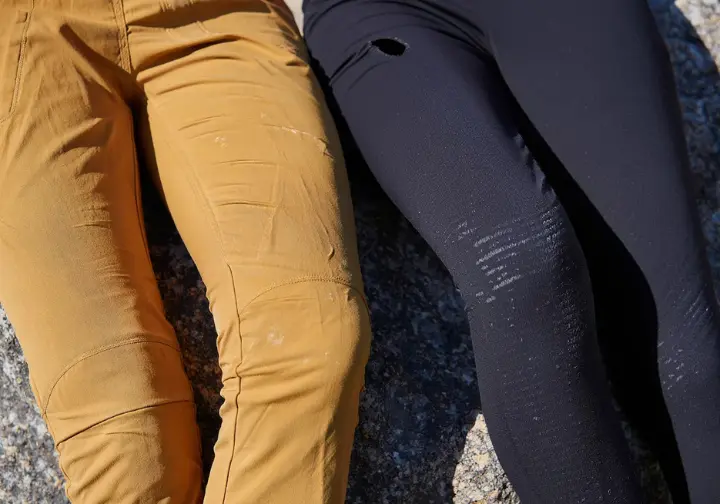
The choice between climbing pants and leggings often sparks discussion. Leggings offer exceptional flexibility, feeling almost like a second skin, which is appealing for bouldering or gym sessions. However, dedicated climbing pants bring advantages in durability, protection, and features that are often indispensable for outdoor climbing, including sport climbing or crack climbing.
Flexibility vs. Durability Trade-off
Leggings generally provide unmatched flexibility due to high spandex content and knit construction; think of familiar stretchy leggings. However, this comes at the cost of durability. Standard leggings are prone to pilling, snagging, and tearing on abrasive rock. Woven climbing pants (like women’s climbing trousers), made from materials like nylon or durable cotton blends, offer far superior resistance to wear and tear, making them a better investment for outdoor use.
Pants also provide significantly more protection from scrapes, sun (UPF), wind, and light rain (DWR) compared to the minimal barrier offered by thin leggings. Another major advantage is pockets. Climbing pants usually feature multiple pockets, including zippered pockets or zip pockets strategically placed for accessibility while wearing a harness – essential for carrying small items on longer routes. Leggings typically lack secure or sufficient pocket options.
Ultimately, the best choice depends on context: leggings suit indoor climbing or smooth rock scenarios, while pants excel outdoors where durability and protection are paramount. For those seeking a middle ground, durable climbing tights like the Outdoor Research Ad-Vantage Leggings offer legging comfort with enhanced abrasion resistance, a good option for a leggings climber.
Top Ladies Climbing Pant Picks
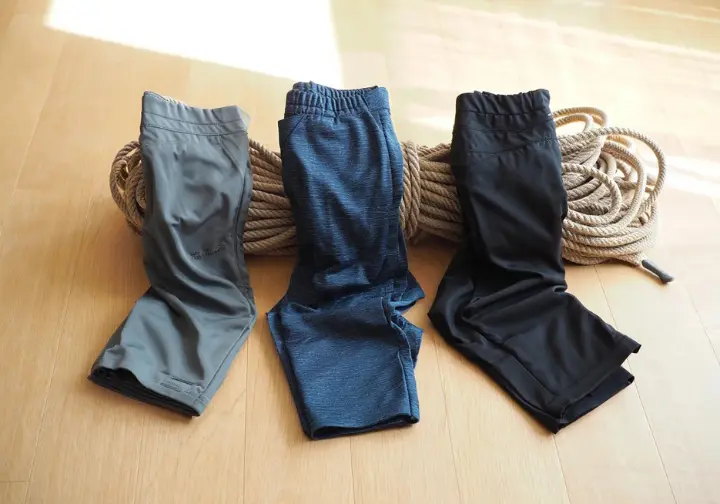
Navigating the options can be overwhelming. Based on addressing the fit secrets, fabric needs, and common feedback, here are some top-performing ladies climbing pants across different categories to help guide your selection. Remember, personal preference and specific needs play a huge role when choosing between several pants.
Best Overall Performers
Outdoor Research Ferrosi Pant | Legendary versatility, durable lightweight synthetic, multiple inseams

The Outdoor Research Ferrosi pants consistently rank high for their blend of lightweight comfort, durability, and climbing-specific features. Constructed from a bluesign-approved stretch-woven ripstop fabric (nylon/spandex blend, now with recycled content), they offer excellent breathability, quick-drying performance, and UPF 50+ sun protection. This makes these multipurpose pants incredibly versatile for hiking, climbing, and travel across various conditions. The fabric effectively resists abrasion yet remains light enough for warm weather.
Engineered for movement, the Ferrosi pants feature articulated knees and a gusseted crotch, allowing for unrestricted high steps and stemming. The harness-compatible waistband includes belt loops and a comfortable lining, while the zippered thigh pocket provides secure storage accessible even when roped up. A key advantage is the availability of multiple inseams (Short, Regular, Tall), catering to a wider range of body types. Drawcord ankle adjustments further enhance fit customization and keep fabric clear of footwork.
While highly water-resistant thanks to DWR, they aren’t fully waterproof for heavy downpours. Some users note the fit runs slightly large, often recommending sizing down. Despite these minor points, the Ferrosi’s reputation for balancing durability, stretch, breathability, and thoughtful features makes it a benchmark all-around outdoor pant, particularly well-suited for climbers who need gear that performs reliably across different adventures and terrains. These are truly great multi-purpose pants.
PROS
- Excellent mobility and great stretch
- Lightweight, breathable, and quick-drying
- Durable ripstop fabric with UPF 50+
- Multiple inseam options available
- Harness-compatible waist and useful pockets
- Adjustable ankle cuffs
CONS
- Fit can run large for some
- Not fully waterproof for heavy rain
- Can feel thin in very windy conditions
Comfort and Versatility Leaders
Mountain Hardwear Dynama/2 Ankle | Supreme comfort, lightweight, great for travel/hiking, ankle length
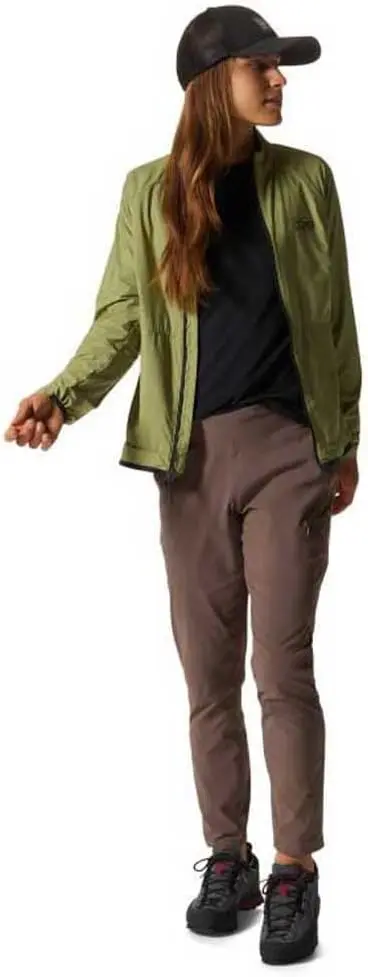
When supreme comfort and casual style are high priorities, the Mountain Hardwear Dynama/2 Ankle pant is a standout favorite. Its lightweight nylon/elastane blend fabric feels incredibly soft and stretchy, often compared to wearing leggings but with a more polished, feminine look. The PFC-free DWR finish sheds light moisture, and the fabric offers UPF 50+ protection, making it suitable for hiking, travel, and everyday wear.
The defining feature is its wide, low-profile stretch waistband, which provides exceptional comfort, especially for all-day wear or under a backpack hip belt. The ankle-length cut is flattering and practical, avoiding excess fabric around the feet. It includes functional pockets, including zippered options for security. Its wrinkle-resistant and quick-drying nature makes it an excellent travel companion that transitions easily from trail to town.
However, the waistband, while comfortable, isn’t ideally designed for optimal harness compatibility, as pockets can bunch, and the fit might feel less secure during dynamic climbing moves compared to more technical pants. The lightweight fabric is also less abrasion-resistant than burlier options. For climbers prioritizing ultimate comfort for hiking, travel, bouldering, or casual use over technical harness performance, the Hardwear Dynama/2 Ankle is a top contender. Consider pairing it with the right climbing shoes for optimal performance.
PROS
- Exceptionally comfortable and lightweight fabric
- Versatile for travel, hiking, and casual wear
- Quick-drying, wrinkle-resistant, UPF 50+
- Flattering ankle-length cut
- Comfortable stretch waistband
- Sustainable fabric certifications (bluesign®, OEKO-TEX®)
CONS
- Waistband/pockets less ideal under a climbing harness
- Fabric less durable than technical climbing pants
- Fit can be snug in the midsection for some
Prana Kanab Pant | Comfortable knit waist, durable cotton blend, good for curves
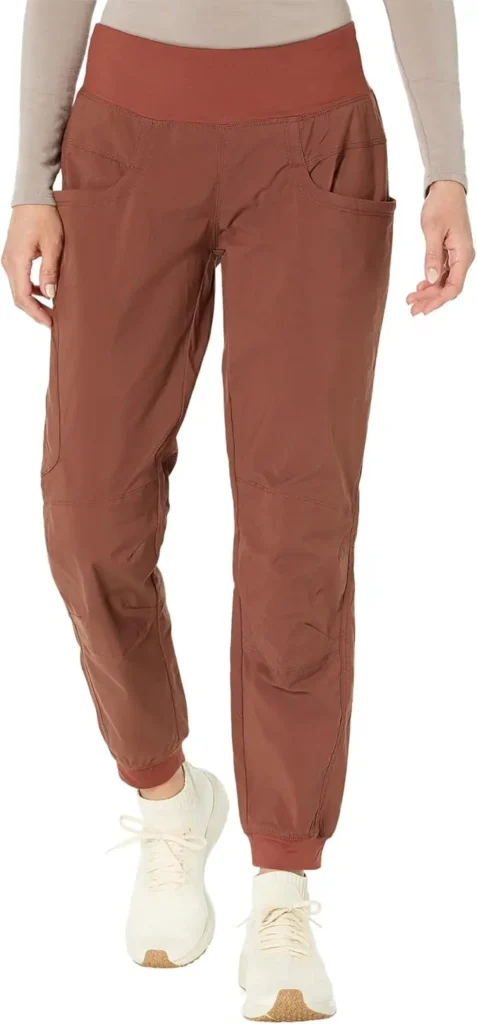
The Prana Kanab Pant addresses the needs of climbers seeking a durable, comfortable pair of pants with a fit that often accommodates curvier figures well. Its blend of organic cotton and recycled polyester provides a soft yet robust feel, offering good breathability for dry conditions and decent abrasion resistance for cragging or bouldering. The fabric includes some elastane for necessary stretch during movement.
A key feature is the high-rise, ribbed knit waistband with an internal drawcord. This design is often praised for its comfort, especially by those who struggle with waist gaps in other pants, and it generally sits well under a women’s climbing harness. Articulated knees and a gusseted crotch enhance mobility, while the relaxed fit through the hip and thigh offers more room than slimmer styles. Multiple pockets, including a zippered thigh pocket, add practicality.
The organic cotton content means these pants absorb more moisture and dry slower than full synthetics, making them less ideal for wet conditions or intense aerobic activity. Some users find the sizing runs slightly small and recommend sizing up. For climbers prioritizing comfort, a curve-friendly fit, and the feel of natural fibers for gym, bouldering, or dry-weather cragging, the Kanab is a popular and well-regarded choice that successfully blends function with a comfortable design.
PROS
- Comfortable and secure knit waistband
- Durable organic cotton blend fabric
- Relaxed fit often suits curvier figures
- Good mobility features (articulation, gusset)
- Sustainable materials (organic cotton, recycled poly)
- Multiple inseam options available
CONS
- Cotton blend absorbs moisture, slow to dry
- Sizing can run small for some
- Waistband may stretch slightly over time
Top Technical Choices
Arc’teryx Gamma Pant | Benchmark softshell, durable, weather-resistant, integrated belt
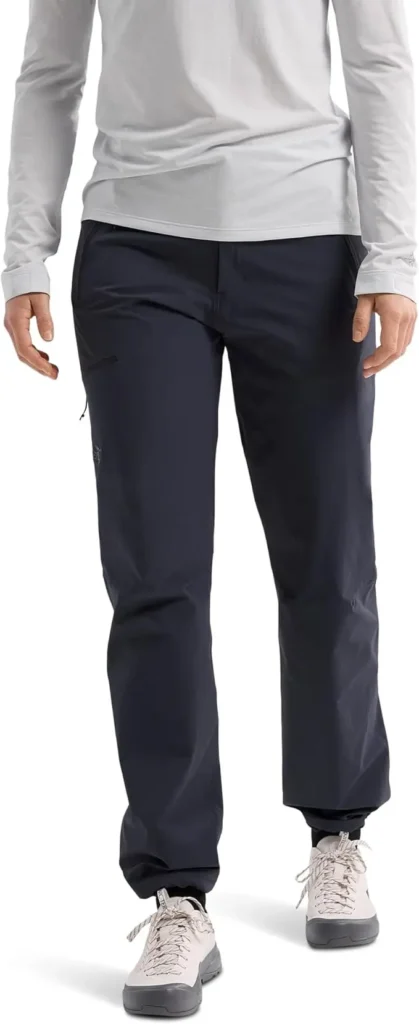
For climbers venturing into alpine climbing environments or needing maximum durability and weather resistance, the Arc’teryx Gamma Pant (formerly Gamma LT) is a benchmark technical softshell pant. Constructed from Fortius™ DW 2.0 fabric, it offers exceptional abrasion resistance, wind resistance, and moderate water repellency thanks to a DWR finish, all while maintaining good breathability and stretch. This makes it ideal for mixed weather conditions encountered in mountain settings. The teryx gamma pants are highly regarded.
The design incorporates articulated patterning and a gusseted crotch for outstanding freedom of movement. The low-profile waistband features an integrated adjustable belt, ensuring a secure fit that remains comfortable under a harness or backpack hip belt. Zippered hand pockets and a thigh pocket provide secure storage. Adjustable drawcord cuffs allow the pants to be sealed over boots or cinched for ventilation. These are excellent alpine-centric pants.
The premium performance comes at a higher price point, and some users have noted the waist snap could be more robust. While highly weather-resistant, it’s not fully waterproof. For serious climbers tackling demanding routes in challenging conditions where durability, mobility, and protection from the elements are paramount, the Gamma Pant represents a top-tier investment in technical performance, built to withstand rigorous use. Its features make it suitable for various climbing gear setups for mountains.
PROS
- Exceptional durability and abrasion resistance
- Highly weather-resistant (wind, light precipitation)
- Excellent stretch and mobility features
- Integrated belt provides secure, low-profile fit
- Harness and backpack compatible design
- Adjustable cuffs enhance versatility
CONS
- Premium price point
- Waist snap durability concerns reported by some
- Not fully waterproof for heavy rain
Bouldering and Gym Stars
Black Diamond Notion SP Pant | Comfortable organic cotton, relaxed fit, elastic waist/cuffs
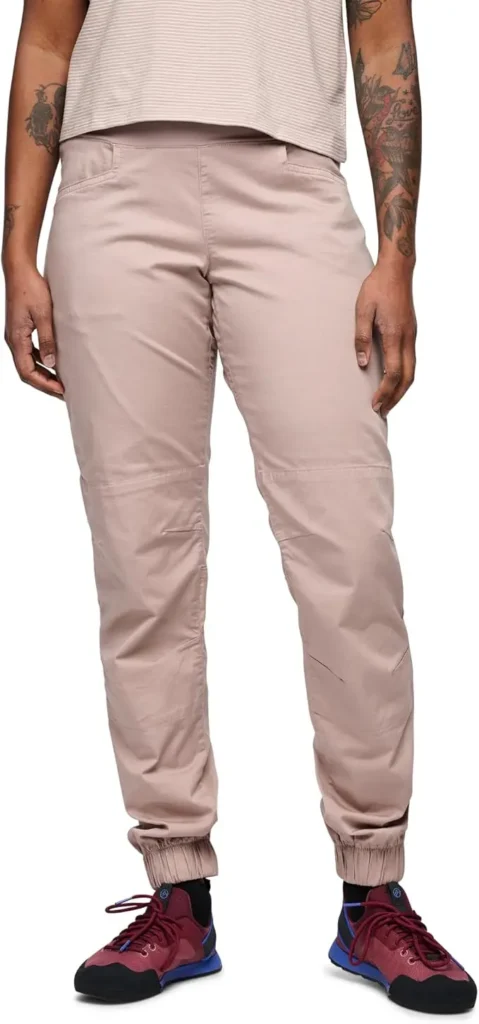
Designed with climbing gym sessions and bouldering in mind, the Black Diamond Notion SP Pant prioritizes comfort and relaxed style. Made primarily from soft, breathable organic cotton with a touch of elastane for stretch, these pants feel comfortable against the skin and allow for good freedom of movement during dynamic sequences. The fabric is reasonably durable for indoor climbing use or less abrasive rock.
The jogger-style design features a comfortable elastic waistband with a drawstring for adjustability, sitting well under a harness. Elastic cuffs are a key feature, keeping the pant legs securely out of the way for precise footwork – crucial for intricate bouldering problems. Reinforced knees add durability in a high-wear area, and multiple pockets offer convenient storage. The relaxed fit is often appreciated by those preferring less restriction.
As a cotton-based pant, the Notion SP is not ideal for wet weather as it absorbs moisture and dries slowly. The fit runs large for many, often requiring sizing down, and the relaxed cut might feel baggy for those preferring a slimmer silhouette. For climbers focused on indoor training, bouldering, or casual cragging in dry conditions, the Notion SP offers a superb blend of comfort, mobility, and climbing-specific features like the essential elastic cuffs and elastic waist.
PROS
- Very comfortable and soft organic cotton fabric
- Relaxed fit allows good mobility
- Elastic waistband and cuffs are harness-friendly and practical
- Reinforced knees add durability
- Good value for a comfortable climbing pant
- Sustainable organic cotton
CONS
- Not suitable for wet conditions (absorbs water)
- Fit runs large; sizing down often needed
- Can feel warm in very hot weather
Durable Legging Alternatives
Outdoor Research Ad-Vantage Leggings | Legging feel with reinforced high-wear zones for durability
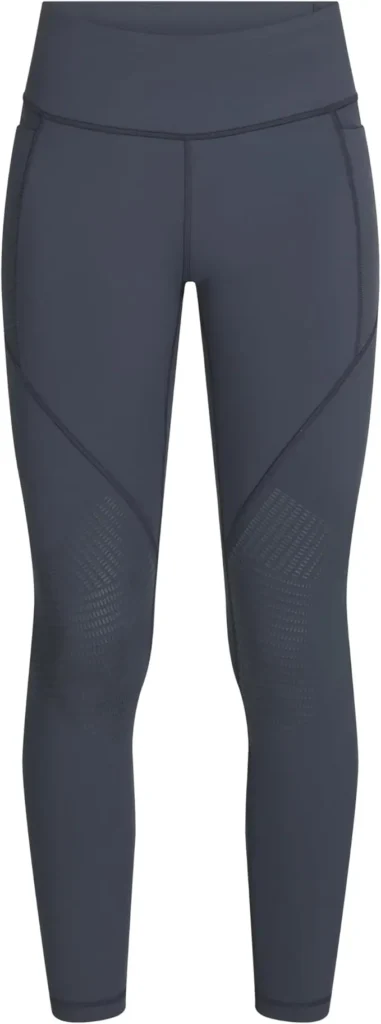
For climbers who love the flexibility and feel of leggings but need more durability for rock contact, the Outdoor Research Ad-Vantage Leggings offer a compelling solution. They utilize a stretchy, moisture-wicking nylon/Lycra blend fabric that provides excellent freedom of movement, combined with strategically placed DuraPrint™ overlays on the knees and hips. These reinforced zones significantly boost abrasion resistance in high-wear areas without sacrificing overall flexibility.
The high-waisted design features a wide, comfortable waistband that stays put under a harness, and includes useful drop-in thigh pockets suitable for carrying a phone or small essentials. The gusseted crotch enhances mobility, and the 7/8 length works well for many climbers, preventing interference with climbing shoes. They offer UPF 30 sun protection and a light DWR finish for added versatility. These leggings bridge the gap between standard athletic tights and more robust climbing pants.
While more durable than typical leggings, they won’t match the toughness of heavy-duty woven pants. The drop-in pockets lack zippers, which might be a concern for securing items during vigorous movement. Some users find the fit runs small. For climbers, particularly boulderers or those on less abrasive rock, who prioritize legging-like mobility but need enhanced durability, the Ad-Vantage Leggings are an innovative and effective option. They pair well with gear like crash pads for climbing.
PROS
- Excellent stretch and freedom of movement
- Reinforced knees/hips (DuraPrint™) enhance durability
- Comfortable and secure high-waisted fit
- Moisture-wicking and quick-drying fabric
- Useful drop-in thigh pockets
- Harness-compatible waistband
CONS
- Not as durable as woven climbing pants
- Pockets lack secure zipper closures
- Fit can run small for some
Finding Your Perfect Pair
Armed with knowledge about fit, fabrics, and features, the final step is selecting the pair of pants that works best for you. This involves more than just reading reviews; it requires active assessment and understanding your personal climbing needs on the wall.
Recall the fit checklist: Does it address potential waist gaps or accommodate your curves? Is the inseam right, or are the cuffs adjustable? Does it have a gusset and articulation for movement? Does the waistband work with your harness? Use this mental checklist when evaluating options. Active testing is vital. Mimic climbing moves in the fitting room – high steps, squats, wide stances. Check for restriction, binding, or discomfort. Can you see your feet clearly?
Leverage community insights from online reviews and forums (like Mountain Project or perhaps even climbingclothing.com), looking for feedback from climbers with similar body types or needs. Finally, don’t hesitate to use return policies. Fit varies significantly between brands. Ordering multiple options or several pants to try at home allows you to make the best decision without compromise. Finding that perfect pair of pants is an investment in your comfort and performance.
Frequently Asked Questions
How tight should women’s climbing pants fit? >
What are the best climbing pants for hot weather? >
How can I avoid the waist gap in climbing pants? >
Are leggings or pants better for climbing? >
We are a participant in the Amazon Services LLC Associates Program, an affiliate advertising program designed to provide a means for sites to earn advertising fees by advertising and linking to Amazon.com. As an Amazon Associate I earn from qualifying purchases. We also participate in other affiliate programs. The information provided on this website is provided for entertainment purposes only. We make no representations or warranties of any kind, expressed or implied, about the completeness, accuracy, adequacy, legality, usefulness, reliability, suitability, or availability of the information, or about anything else. Any reliance you place on the information is therefore strictly at your own risk. Additional terms are found in the terms of service.



